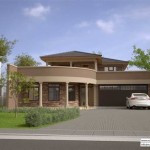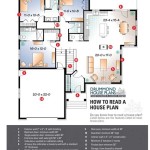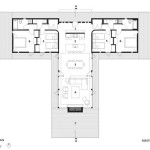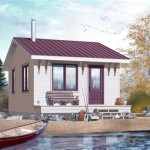Vacation home house plans are pre-designed blueprints that outline the layout, dimensions, and features of a vacation home. They provide a framework for the construction of a vacation property, ensuring that it meets specific requirements and preferences while adhering to building codes and regulations.
When planning a vacation home, selecting the right house plan is crucial. It serves as a guide for architects and contractors, ensuring that the finished product aligns with the homeowner’s vision and expectations. Vacation home house plans come in various styles, sizes, and configurations, catering to different tastes and needs.
In the following sections, we will delve into the key considerations, benefits, and resources available when choosing vacation home house plans. We will explore the different types of plans and how to select the most suitable one for your dream vacation retreat.
When selecting vacation home house plans, it is essential to consider the following key points:
- Size and layout
- Architectural style
- Number of bedrooms and bathrooms
- Outdoor living spaces
- Energy efficiency
- Building codes and regulations
- Budget
- Accessibility
- Resale value
By carefully considering these factors, you can choose a vacation home house plan that meets your specific needs and preferences, ensuring a comfortable and enjoyable retreat for years to come.
Size and layout
The size and layout of your vacation home will depend on a number of factors, including the number of people who will be using it, the types of activities you plan to do, and your budget. If you plan to entertain guests or have a large family, you will need a home with more bedrooms and bathrooms. If you plan to spend a lot of time outdoors, you will want a home with a large deck or patio. And if you are on a tight budget, you will need to choose a home that is smaller and more affordable.
The layout of your home is also important. You will want to choose a layout that flows well and makes sense for the way you live. For example, if you plan to spend a lot of time cooking, you will want a kitchen that is close to the dining room. And if you have small children, you will want a home with a bedroom that is close to the master bedroom.
Here are some additional things to consider when choosing the size and layout of your vacation home:
- The number of bedrooms and bathrooms
- The size of the kitchen and dining room
- The size of the living room and family room
- The number of outdoor living spaces
- The size of the garage
- The size of the lot
Once you have considered all of these factors, you can start to narrow down your choices and choose the perfect vacation home house plan for your needs.
Architectural style
The architectural style of your vacation home is a matter of personal preference. However, there are certain styles that are more popular for vacation homes than others. These styles tend to be more relaxed and informal, and they often incorporate elements of the local environment.
Some of the most popular architectural styles for vacation homes include:
- Coastal: Coastal homes are typically characterized by their light and airy interiors, open floor plans, and large windows that offer stunning views of the ocean. They often feature elements such as whitewashed walls, beadboard paneling, and shiplap siding.
- Rustic: Rustic homes are typically made from natural materials such as wood and stone. They often feature exposed beams, vaulted ceilings, and large fireplaces. Rustic homes are often located in mountainous or wooded areas.
- Modern: Modern homes are characterized by their clean lines, simple forms, and open floor plans. They often feature large windows, skylights, and other elements that bring the outdoors in. Modern homes can be found in a variety of settings, from urban to rural.
- Tropical: Tropical homes are designed to take advantage of the warm climate and lush vegetation of their surroundings. They often feature open-air living areas, large windows, and tropical landscaping. Tropical homes can be found in a variety of locations, from beachside to jungle.
Once you have chosen an architectural style for your vacation home, you can start to narrow down your choices and choose the perfect house plan for your needs.
In addition to the four main architectural styles listed above, there are a number of other styles that can be used for vacation homes. These styles include:
- Craftsman
- Mediterranean
- Victorian
- Colonial
- French Country
- Scandinavian
- Cape Cod
- Tudor
The best way to choose the right architectural style for your vacation home is to consider your personal preferences and the location of your home. You should also keep in mind the climate and the types of activities you plan to do while on vacation.
Number of bedrooms and bathrooms
The number of bedrooms and bathrooms you need in your vacation home will depend on a number of factors, including the number of people who will be using it, the types of activities you plan to do, and your budget.
If you plan to entertain guests or have a large family, you will need a home with more bedrooms and bathrooms. If you plan to spend a lot of time outdoors, you may be able to get by with fewer bedrooms and bathrooms. And if you are on a tight budget, you will need to choose a home with fewer bedrooms and bathrooms.
Here are some additional things to consider when choosing the number of bedrooms and bathrooms in your vacation home:
- The number of people who will be using the home
- The types of activities you plan to do
- Your budget
- The size of the home
- The layout of the home
Once you have considered all of these factors, you can start to narrow down your choices and choose the perfect vacation home house plan for your needs.
In general, it is better to have more bedrooms and bathrooms than you think you need. This will give you flexibility and ensure that you have enough space for everyone who will be using the home. However, it is important to keep in mind that more bedrooms and bathrooms will also mean higher costs.
Outdoor living spaces
Outdoor living spaces are an important part of any vacation home. They provide a place to relax and enjoy the scenery, and they can also be used for entertaining guests.
When choosing a vacation home house plan, it is important to consider the type of outdoor living spaces you want. Do you want a deck, a patio, a screened-in porch, or a combination of these? Once you know what type of outdoor living space you want, you can start to narrow down your choices.
Here are some of the most popular types of outdoor living spaces for vacation homes:
- Decks: Decks are a great way to add outdoor living space to your vacation home. They can be built in a variety of sizes and shapes, and they can be used for a variety of purposes, such as dining, relaxing, and sunbathing.
- Patios: Patios are another popular option for outdoor living spaces. They are typically made of concrete or pavers, and they can be used for a variety of purposes, such as dining, entertaining, and relaxing.
- Screened-in porches: Screened-in porches are a great way to enjoy the outdoors without being bothered by bugs. They can be used for a variety of purposes, such as dining, relaxing, and reading.
- Combination outdoor living spaces: Many vacation homes have a combination of outdoor living spaces, such as a deck, a patio, and a screened-in porch. This gives homeowners the flexibility to use their outdoor space for a variety of purposes.
When choosing the right type of outdoor living space for your vacation home, it is important to consider the following factors:
- The climate
- The size of your yard
- Your budget
- Your personal preferences
By considering all of these factors, you can choose the perfect outdoor living space for your vacation home.
Energy efficiency
Energy efficiency is an important consideration for any home, but it is especially important for vacation homes. Vacation homes are often located in remote areas where energy costs can be high. Additionally, vacation homes are often used seasonally, which means that they are often unoccupied for long periods of time. This can lead to energy waste.
There are a number of ways to make your vacation home more energy efficient. Some of the most effective methods include:
- Insulating your home: Insulation is one of the most effective ways to reduce energy costs. It helps to keep your home warm in the winter and cool in the summer, which can reduce your heating and cooling costs. There are a variety of different types of insulation available, so be sure to choose one that is right for your climate and budget.
- Using energy-efficient appliances: Energy-efficient appliances use less energy to operate, which can save you money on your energy bills. When purchasing new appliances for your vacation home, be sure to look for the Energy Star label. Energy Star appliances meet strict energy efficiency standards, so you can be sure that they will save you money.
- Installing a programmable thermostat: A programmable thermostat allows you to set different temperatures for different times of day. This can help you to save energy by reducing the temperature when you are away from home or asleep. Many programmable thermostats also have a vacation mode setting, which can further reduce energy consumption.
- Using renewable energy sources: Renewable energy sources, such as solar and wind power, can help you to reduce your reliance on fossil fuels. If you are considering installing a renewable energy system for your vacation home, be sure to do your research and choose a system that is right for your needs and budget.
By taking these steps, you can make your vacation home more energy efficient and save money on your energy bills.
Building codes and regulations
Building codes and regulations are an important part of the vacation home construction process. They ensure that your home is safe and habitable, and they protect the health and safety of the public. Building codes and regulations are typically established by local governments, and they vary from place to place.
When choosing a vacation home house plan, it is important to make sure that it complies with all applicable building codes and regulations. This will help to ensure that your home is safe and that it meets all of the necessary requirements. To determine the specific building codes and regulations that apply to your vacation home, you should contact the local building department.
Building codes and regulations typically cover a wide range of topics, including:
- Structural requirements
- Fire safety
- Electrical safety
- Plumbing safety
- Energy efficiency
- Accessibility
- Zoning requirements
By following all applicable building codes and regulations, you can help to ensure that your vacation home is safe and habitable, and that it meets all of the necessary requirements.
Building codes and regulations are constantly being updated, so it is important to check with the local building department to make sure that you have the most up-to-date information. You can also find a lot of helpful information online.
Budget
Budget is one of the most important considerations when choosing a vacation home house plan. The cost of building a vacation home can vary dramatically depending on a number of factors, including the size of the home, the materials used, and the location of the property.
- Size of the home: The size of the home is one of the biggest factors that will affect the cost of construction. A larger home will require more materials and labor, which will increase the overall cost.
- Materials used: The materials used to build the home will also affect the cost of construction. Some materials, such as stone and brick, are more expensive than others, such as wood and vinyl siding.
- Location of the property: The location of the property can also affect the cost of construction. Building a home in a remote area will be more expensive than building a home in a more developed area. This is because remote areas often have higher transportation costs and less access to skilled labor.
- Labor costs: The cost of labor will also vary depending on the location of the property. Labor costs are typically higher in urban areas than in rural areas.
It is important to factor in all of these costs when choosing a vacation home house plan. You should also keep in mind that there will be additional costs associated with building a vacation home, such as the cost of land, permits, and utilities. By carefully considering all of these costs, you can choose a vacation home house plan that fits your budget.
Accessibility
Accessibility is an important consideration for any home, but it is especially important for vacation homes. Vacation homes are often used by people of all ages and abilities, and it is important to make sure that everyone can enjoy the home safely and comfortably.
There are a number of ways to make a vacation home more accessible. Some of the most important things to consider include:
- Entrances and exits: All entrances and exits to the home should be accessible to people with disabilities. This means that there should be no steps or other barriers that could prevent someone from entering or exiting the home.
- Doorways: Doorways should be wide enough to accommodate wheelchairs and other mobility devices. They should also have lever handles that are easy to use for people with limited hand dexterity.
- Hallways and corridors: Hallways and corridors should be wide enough to allow people with mobility devices to move around easily. They should also be free of obstacles, such as furniture or clutter.
- Bathrooms: Bathrooms should be accessible to people with disabilities. This means that there should be a roll-in shower or bathtub, a toilet with grab bars, and a sink that is accessible from a seated position.
By following these tips, you can make your vacation home more accessible to people of all ages and abilities.
Universal design
Universal design is a design approach that focuses on creating environments that are accessible to people of all ages and abilities. When applied to vacation homes, universal design can make the home more enjoyable for everyone, regardless of their abilities.
There are a number of universal design features that can be incorporated into vacation home house plans. Some of the most common features include:
- Open floor plans: Open floor plans allow people to move around easily and without barriers. They are also easier to navigate for people with mobility devices.
- Wide doorways and hallways: Wide doorways and hallways allow people with mobility devices to move around easily. They are also easier to navigate for people with strollers or luggage.
- Lever handles: Lever handles are easier to use for people with limited hand dexterity. They can be installed on doors, cabinets, and other fixtures.
- Roll-in showers: Roll-in showers are accessible to people with mobility devices. They have a sloped entry and a seat that allows people to sit while showering.
By incorporating universal design features into your vacation home house plan, you can create a home that is more accessible and enjoyable for everyone.
Safety features
Safety is an important consideration for any home, but it is especially important for vacation homes. Vacation homes are often located in remote areas, and they may be unoccupied for long periods of time. This can make them more vulnerable to crime and other safety hazards.
There are a number of safety features that can be incorporated into vacation home house plans. Some of the most common features include:
- Security systems: Security systems can help to deter crime and protect your home from intruders. They can include features such as motion detectors, door and window sensors, and alarms.
- Fire alarms: Fire alarms can help to alert you to a fire and give you time to evacuate. They should be installed in all bedrooms and common areas.
- Carbon monoxide detectors: Carbon monoxide detectors can help to alert you to the presence of carbon monoxide, a colorless, odorless gas that can be fatal. They should be installed in all bedrooms and common areas.
- Smoke detectors: Smoke detectors can help to alert you to a fire. They should be installed in all bedrooms and common areas.
By incorporating safety features into your vacation home house plan, you can help to protect your home and your family from crime and other safety hazards.
Emergency preparedness
Emergency preparedness is an important consideration for any home, but it is especially important for vacation homes. Vacation homes are often located in remote areas, and they may be difficult to access in the event of an emergency. This is why it is important to have a plan in place for how you will handle different types of emergencies.
There are a number of things you can do to prepare your vacation home for an emergency. Some of the most important things to consider include:
- Creating an emergency plan: An emergency plan will help you to know what to do in the event of an emergency. It should include information on how to evacuate the home, how to contact emergency services, and where to go for help.
- Assembling an emergency kit: An emergency kit will provide you with essential supplies in the event of an emergency. It should include items such as food, water, first aid supplies, and a flashlight.
- Securing your home: Securing your home will help to protect it from damage in the event of an emergency. This includes things like boarding up windows and doors, and bringing in outdoor furniture.
- Staying informed: Staying informed about potential emergencies will help you to be prepared. This includes monitoring weather reports and listening to local news.
By taking these steps, you can help to prepare your vacation home for an emergency and protect yourself and your family.
Resale value
The resale value of your vacation home is an important consideration when choosing a house plan. You want to choose a plan that will appeal to a wide range of potential buyers, and that will retain its value over time.
- Location
The location of your vacation home will have a significant impact on its resale value. Homes in desirable locations, such as those near beaches, lakes, or mountains, tend to have higher resale values than homes in less desirable locations.
- Size
The size of your vacation home will also affect its resale value. Larger homes tend to have higher resale values than smaller homes, but there is a point of diminishing returns. A home that is too large may be difficult to sell, and may not be as appealing to potential buyers.
- Layout
The layout of your vacation home is also important. Homes with open floor plans and large windows tend to have higher resale values than homes with closed-off floor plans and small windows. Potential buyers want homes that are bright, airy, and spacious.
- Amenities
The amenities that your vacation home offers will also affect its resale value. Homes with pools, hot tubs, and other amenities tend to have higher resale values than homes without these amenities. Potential buyers are looking for homes that offer them a variety of ways to relax and enjoy their vacation.
By considering all of these factors, you can choose a vacation home house plan that will have a high resale value. This will help you to protect your investment and ensure that you get the most value for your money.










Related Posts








